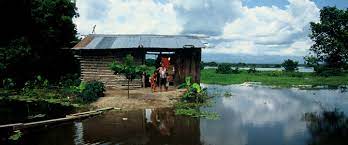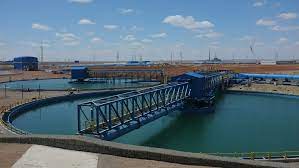One of the most fundamental objects of hydrological studies is to provide adequate water supply for domestic, industrial and agricultural uses. In spite of this however, the problem of inadequate water supply is still prevalent in most parts of the world.
The question now is how can we develop and manage water resources to meet our current and future forecasted needs? This question will form the central theme of discussions in this article.
Defining Water Resources Development
Water resources development is the process by which the world’s water sources are engineered to deliver adequate quantities of high-quality water to serve the forecasted need of society (Botkin and Keller, 1998).
Management of water resources for water supply is a complex issue that will become more difficult as demand for water increases in the coming years. This difficulty will be especially apparent in the semiarid and arid parts of the world where water is or soon will be in short supply.
Read Also : Problems of Water Resources Development
Options for minimizing potential water supply problems include locating alternative water supplies and managing existing supplies better (Botkin and Keller, 1998).
These options were also advocated by Miller (1999) where the stated that the two general approaches to water resources management are to increase the unstable supply and to decrease unnecessary loss of waste.
Most water resource experts believe that any effective plan for water management should combine these approaches.
Key Dimensions in Water Resources Development and Management
According to Mcdonald and Kay (1988), water management is multidimensional. It embraces planning, design, construction, operation and maintenance. It must be conducted within the constraints of technology, social goals, laws and regulations, political viewpoints, environmental concerns, and economic realities.

To be effective, water management must recognize and take advantage of interconnections between surface and groundwater bodies, exploit the potential for coordinated use of existing facilities, acknowledge that water quantity and quality are a single issue, devise new ways to operate old systems, blend structural and non-structural approaches, accept that the expansiveness of water resources systems may require regional rather than local solutions to problems.
In concept, water management is simple; the trouble is that the boundaries of the physical systems that must be dealt with often differ markedly from the political boundaries that affect how water is used and developed.
According to Wurbs (2003), the development and management of water resources include the following key dimensions including; Facilities Provision, Demand Management, Desalination, Water Allocation and Integrated Water Management.
1. Facilities Provision
Water supply facilities include wells, dams and storage reservoirs, pipelines and pump station, water treatment plants, municipal distribution pipe network, wastewater collection and treatment systems, and irrigation equipment.
Dams, reservoirs, and associated structures play a key role in water supply and multipurpose water management. Most of the world’s rivers are characterized by highly variable flows, with seasonal fluctuations aggravated by severe droughts and extreme floods.
Reservoir storage is therefore necessary to regulate stream flow fluctuations and develop reliable water supplies (Wurbs, 2003). Also highlighting the role of dams in water resources management, Miller (1996) stated that rainwater and water from melting snow that would otherwise be lost can be captured and stored in large reservoirs behind dams built across rivers.
He further noted that damming increases the annual supply by collecting fresh surface water during wet periods and storing it for use during dry periods.
2. Demand Management
Hydrologic, environmental, and economic conditions have led to heightened constraints on developing additional water supplies. Consequently, demand management in the form of reducing waste and increasing efficiency of use has become a major focus in the development of water resources in some parts of the world.
Demand management is concerned with the prevention of water wastages in any form – domestic, industry or agriculture. Water wastages through undetected pipeline leaks in aging water-distribution systems, agricultural losses through seepage and evaporation, and other forms of losses are involved in demand management.
3. Desalination
Removing dissolved salts from ocean water or brackish (slightly salty) groundwater is an appealing way to increase freshwater supplies because of the huge volume of, seawater adjacent to coastal cities (Miller, 1996).
Until recently, the high salt content of the oceans, inland seas, and certain segment of rivers and groundwater has severely restricted our ability to use their waters. Now, however, desalination technology is well established and readily available.
The primary limiting factor of desalination is other cost relative to the water-supply options. However, due to over drafting of the groundwater system, large areas of wetlands are being permanently damaged, lakes are drying up, and domestic wells for hundreds of families are being lost.
This type of scenario will lead to increased use of desalination technology, but the challenge for future research and development is to continue to minimize cost.
4. Water Allocation
Water rights systems and interstate and international agreements allocating water resources are becoming increasingly important.
Around the world, 261 river basins are shared by two or more countries, often leading to disputes and conflicts related to water supply. As a result, methods of cooperation and conflict mitigation need to be brought into play (Wurb, 2003).
5. Integrated Water Management
Water resources are tapped by multiple users for a variety of purpose. Therefore, effective water management requires a systems approach, with comprehensive integration of a number of factors.
In particular, attention must be given to both water quality and quantity. Conjunctive management of groundwater and surface water resources is required and the water needs to be appropriately allocated to the various users.
Human needs must be balanced with ecosystem needs, economic development with environmental protection. Efforts have to be made toward optimizing the mix of demand management programmes, new facilities construction, and improved operations and maintenance of existing facilities.
Read Also : Methods of Disposal of Waste Pesticide Containers
Water-management approaches need to incorporate ongoing advances in water supply technologies such as desalination processes and efficient irrigation techniques and the technology chosen have to be appropriate for the particular country, region, and local culture.
In addition, computer technology can be used to assist in data collection, analysis, systems modeling and management.
In summary, as we look to the future, we can expect that the planning and management of water resources will move toward a holistic systems approach, which will coordinate and integrate various aspects, including water supply (for domestic, industrial, and agricultural needs), hydroelectric power, flood control, and ecosystem conservation.
The reduction of waste and enhancement of efficiency will be increasingly stressed. And the decision making process will have to consider the views of various people, including scientists, engineers, political officials, interest groups, and the public at large. The success of this approach will depend on how well the diverse factors are blended to make up the larger picture.
Water resource development is the process by which the world’s water sources are engineered to deliver adequate quantities of high-quality water to serve the forecasted need of society.
The key dimensions in water resources development and management include facilities provision, demand management, water allocation, desalination and integrated water management.

